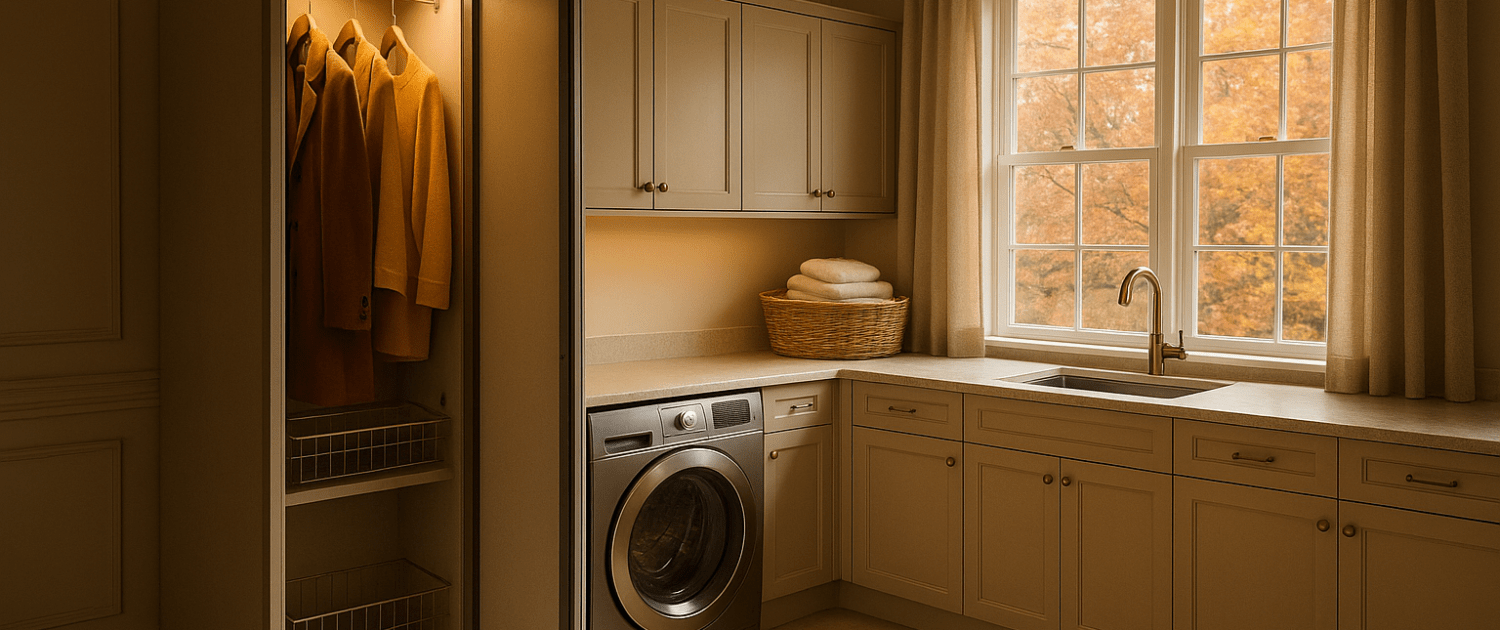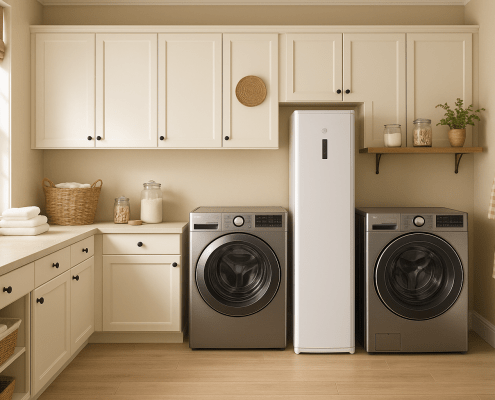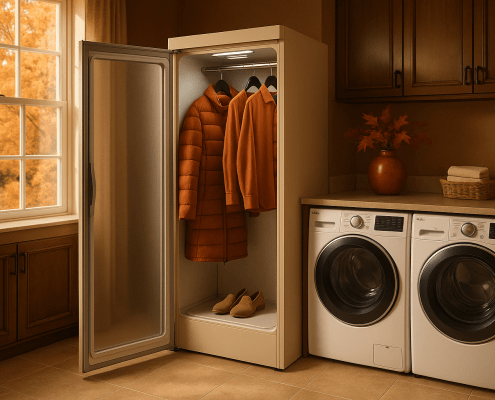How to Reset Your Laundry Steam Closet After a Power Surge
Steven E / Tuesday July 8, 2025
Power surges can wreak havoc on electronics, and your laundry steam closet is no exception. If your closet won’t turn on after a power blip or full outage, don’t panic. A quick reset is usually all it takes to get things running smoothly again. Here’s a simple guide to safely reset your laundry steam closet after a power surge.
The information in this article may not apply to your specific appliance model. We recommend consulting your manufacturer’s documentation or contact us with any questions.
Why Power Surges Affect Your Steam Closet
A power surge happens when the electrical voltage flowing into your home spikes higher than normal, sometimes for just a fraction of a second. That extra voltage can confuse or overload the delicate electronics inside your steam closet.
Many steam closets have built-in safety circuits that cut power or “lock out” the control board temporarily after a surge. This prevents damage to sensitive parts. But it also means your appliance may not operate normally until you reset it.
Signs Your Steam Closet Needs a Reset
If you’ve just experienced a power surge or outage, here are the most common symptoms you might notice:
- The control panel is completely blank.
- The closet won’t turn on at all.
- Lights flash or display an error code.
- Buttons respond erratically or not at all.
- The unit powers on but shuts off immediately.
Any of these are good indicators that your steam closet’s internal electronics need a hard reset to get back to normal operation.
What You’ll Need
Resetting your steam closet doesn’t require much. But if you end up needing to test or replace a part, it’s good to have a few basics on hand:
- Microfiber cloth (to clean dust from vents or contacts)
- Multimeter (to test voltage and continuity if needed)
- Flashlight (to see inside the unit if you need to open panels)
- The owner’s manual (to identify error codes, if displayed)
Now let’s get started.
Step 1: Power Down Completely
The first step is to remove power from the appliance entirely.
- Unplug your steam closet from the outlet.
- If it’s hardwired, turn off the breaker at your home’s electrical panel.
- Wait at least 60 seconds. For some models, it’s better to wait 2–5 minutes to allow all capacitors and internal circuits to fully discharge.
This is the most important step. Simply turning the closet “off” at the control panel isn’t enough; many appliances still keep their memory circuits energized until they’re unplugged.
Step 2: Inspect the Power Source
While the unit is unplugged, take a moment to check the outlet or power supply. Sometimes after a surge, a breaker might trip or the outlet itself could be damaged.
- Plug a small lamp or phone charger into the same outlet to confirm it works.
- If the outlet isn’t supplying power, reset the breaker and test again.
- If you’re using a surge protector or power strip, make sure it’s still functioning properly.
Once you’ve verified the outlet is good, plug the steam closet back in or restore power at the breaker.
Step 3: Perform a Hard Reset
With power restored, some steam closets reset automatically. But if yours still isn’t working, you may need to perform a manual reset sequence.
Common Reset Methods:
- Hold down the Power button for 5–10 seconds until the display resets.
- On some models, press and hold both the Power and Start/Pause buttons together for 5 seconds.
- Check your owner’s manual for the exact button combination, if needed.
After performing the reset, the display should light up and respond normally. If it does, you’re done. Run a short cycle to confirm everything is working.
Step 4: Check for Error Codes
If the reset doesn’t work, or if the display shows a flashing light or code, your steam closet may be alerting you to a specific issue caused by the power surge.
Some common error codes after a power surge relate to:
- Communication errors between the control board and sensors.
- Overvoltage or undervoltage warnings.
- Internal memory or software glitches.
Refer to your owner’s manual for a list of error codes and what they mean. Many of these can still be cleared with a reset or by unplugging for a longer period (up to 30 minutes).
Step 5: Test the Internal Parts
If the display stays blank or the closet still doesn’t function after resetting, you may need to dig a little deeper.
Here are some quick checks you can do:
Test the Power Cord and Plug:
- Inspect for visible damage, frayed wires, or burn marks.
- Use a multimeter to confirm continuity through the cord.
- Replace the cord if damaged.
Check Internal Fuses:
Some steam closets have an internal fuse or thermal cutoff that can blow during a power surge.
- Unplug the closet and remove the rear or side panel.
- Locate the fuse on the control board or near the power input.
- Test it with a multimeter for continuity.
- If blown, replace with an identical fuse type.
Inspect the Control Board:
Power surges can occasionally damage the control board itself. Look for:
- Burn marks or scorched components.
- Bulging or leaking capacitors.
- Loose or burned connectors.
If you find visible damage on the board, it may need to be replaced.
Step 6: Run a Test Cycle
Once you’ve reset the unit and verified that power and components look good, plug the closet back in and run a short cycle without clothes. If all seems normal, your steam closet is back in business.
Where To Find Us
If you need any replacement parts for your appliances, you can enter your model number at AppliancePartsPros.com to locate and order them quickly. Most orders arrive in just two business days, and we have tons of great information in our repair help section and YouTube videos to help you troubleshoot.
Stay connected with the latest DIY tips, tutorial videos, and repair guides by following us on Facebook, Instagram, and Twitter. We love hearing about your repair stories and successes. If you need more help or want personalized guidance, feel free to reach out. We’re ready to help you take on your next project with confidence!
With nearly a decade of experience in providing top-notch customer service regarding appliance parts and repair, Steven enjoys sharing practical advice, troubleshooting tips, and interesting information to help readers stay informed.





